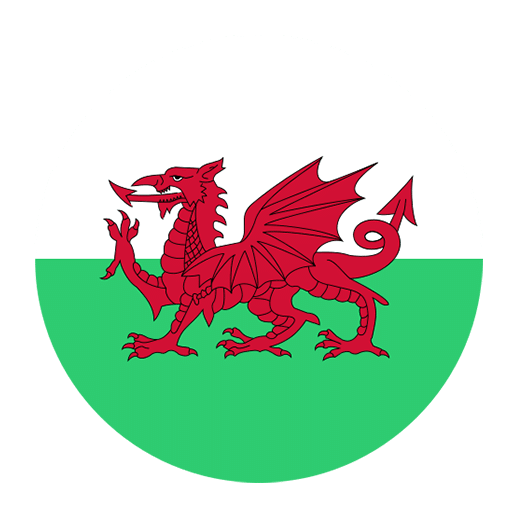The Celtic language family, though not as widely spoken as some of its Indo-European counterparts, holds a fascinating place in the linguistic landscape of the British Isles and beyond. Among these languages, Welsh stands out not only for its rich literary tradition and continued vibrancy but also for its influence on other Celtic languages. This influence is multifaceted, impacting lexical borrowings, syntactic structures, phonological developments, and more. Understanding the influence of Welsh on other Celtic languages provides valuable insights into the dynamics of language contact, preservation, and evolution within this unique linguistic family.
Historical Context of Welsh and Celtic Languages
To fully appreciate the influence of Welsh on other Celtic languages, it’s essential to grasp the historical context. The Celtic languages are divided into two primary branches: Goidelic (or Gaelic) and Brythonic (or Brittonic). Welsh belongs to the Brythonic branch, alongside Breton and Cornish. The Goidelic branch includes Irish, Scottish Gaelic, and Manx.
The historical interactions between these languages have been shaped by migrations, invasions, and varying degrees of political dominance. Wales, with its relatively stable borders and enduring cultural identity, has played a crucial role in preserving the Brythonic linguistic heritage. Over centuries, Welsh has exerted considerable influence on its sister languages, especially Cornish and Breton, while also interacting with Goidelic languages.
Lexical Borrowings
One of the most direct ways languages influence each other is through lexical borrowings. Welsh has contributed a notable array of words to other Celtic languages, particularly Cornish and Breton. For example, the Cornish word for ‘church’ is “eglos,” which is closely related to the Welsh “eglwys.” Similarly, the Breton word for ‘cat’ is “kazh,” which bears resemblance to the Welsh “cath.”
These borrowings are not merely superficial; they often reflect deeper cultural and social exchanges. For instance, the exchange of religious terminology between Welsh and Cornish can be traced back to the Christianization of the Celtic lands, where ecclesiastical terms were shared as part of the spread of Christianity.
Syntactic Structures
Beyond vocabulary, Welsh has also influenced the syntactic structures of other Celtic languages. One prominent example is the use of verb-subject-object (VSO) word order, which is characteristic of the Celtic language family. While this structure is not unique to Welsh, the language’s robust use of it has reinforced its presence in Cornish and Breton.
Moreover, Welsh’s use of prepositional pronouns—where prepositions are combined with pronouns to form single words—has parallels in Cornish and Breton. For instance, the Welsh “i mi” (to me) finds its counterpart in the Cornish “dhymm” and the Breton “din.” This syntactic feature underscores the deep grammatical affinities shared among the Brythonic languages, with Welsh often serving as a model.
Phonological Developments
Phonology, or the study of sound systems within languages, is another area where Welsh has left its mark on other Celtic languages. Welsh’s phonological system, characterized by its use of consonantal mutations and a rich array of vowel sounds, has parallels in both Cornish and Breton.
One striking example is the phenomenon of initial consonant mutation, where the initial consonant of a word changes based on grammatical context. In Welsh, this can be seen in the mutation of “p” to “b” or “m” depending on the preceding word. Cornish and Breton exhibit similar mutations, suggesting a shared phonological heritage with Welsh as a significant influence.
Additionally, the vowel systems of Cornish and Breton show similarities to Welsh, particularly in the use of long and short vowels and the presence of diphthongs. These phonological features contribute to the distinct melodic quality often associated with Celtic languages and highlight the interconnectedness of their sound systems.
Literary and Cultural Exchanges
The influence of Welsh on other Celtic languages extends beyond the linguistic realm into literature and culture. Welsh has a rich literary tradition, with medieval poetry and prose that have inspired similar works in Cornish and Breton. The legendary tales of the Mabinogion, for instance, have counterparts in Breton folklore and Cornish legends, reflecting shared narrative traditions.
Moreover, the cultural connections fostered by language have facilitated mutual exchanges in music, art, and folklore. Welsh hymns and folk songs have found their way into Breton and Cornish repertoires, enriching the cultural tapestry of the Celtic world. These exchanges underscore the role of Welsh as a cultural bridge among the Celtic nations.
Modern Revitalization Efforts
In recent decades, efforts to revitalize Celtic languages have gained momentum, with Welsh often serving as a model for language preservation and promotion. The success of Welsh-medium education, broadcasting in Welsh, and government support for the language has inspired similar initiatives in Cornish and Breton communities.
The establishment of language courses, bilingual signage, and cultural festivals celebrating Celtic heritage have drawn on the Welsh experience to bolster the status of other Celtic languages. The Welsh Language Act of 1993 and subsequent legislation have demonstrated the potential for governmental support to make a tangible difference in language revitalization, providing a blueprint for other Celtic language communities.
The Role of Technology
Technology has played a pivotal role in modern language revitalization efforts. Welsh has embraced digital platforms, with online courses, apps, and social media groups dedicated to promoting the language. This digital presence has not only strengthened Welsh but has also offered valuable lessons for other Celtic languages.
For example, the success of the Welsh-language Wikipedia has inspired similar projects for Cornish and Breton. Online resources, such as dictionaries and language learning apps, have made Celtic languages more accessible to learners worldwide. The collaboration among Celtic language communities in the digital sphere highlights the shared goal of linguistic preservation and growth.
Challenges and Future Directions
While the influence of Welsh on other Celtic languages is profound, it is essential to acknowledge the challenges faced by these languages. Many Celtic languages, including Cornish and Breton, have experienced significant decline in the number of speakers due to historical factors such as colonization, urbanization, and language shift.
Revitalization efforts must address these challenges by fostering intergenerational transmission, increasing the visibility of the languages in public life, and promoting their use in various domains. The success of Welsh in achieving these goals offers valuable lessons but also underscores the need for tailored approaches that consider the unique sociolinguistic contexts of each Celtic language.
Promoting Mutual Support
One promising direction for the future is the promotion of mutual support among Celtic language communities. By sharing resources, expertise, and best practices, these communities can strengthen their collective efforts. Collaborative projects, such as bilingual publications, cultural exchanges, and joint advocacy for language rights, can amplify the impact of individual initiatives.
Moreover, fostering a sense of solidarity among Celtic language speakers can enhance the visibility and prestige of these languages. Celebrating the interconnectedness of Welsh, Cornish, Breton, Irish, Scottish Gaelic, and Manx through festivals, conferences, and media can create a broader awareness of the Celtic linguistic heritage.
Conclusion
The influence of Welsh on other Celtic languages is a testament to the enduring connections within the Celtic language family. From lexical borrowings and syntactic structures to phonological developments and cultural exchanges, Welsh has played a significant role in shaping its sister languages. The modern revitalization efforts of Welsh offer valuable insights and inspiration for the preservation and promotion of other Celtic languages.
As we move forward, fostering mutual support, leveraging technology, and addressing the unique challenges faced by each language community will be crucial. By celebrating the shared heritage and promoting the vibrant diversity of the Celtic languages, we can ensure their continued vitality for generations to come.

